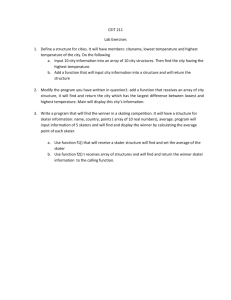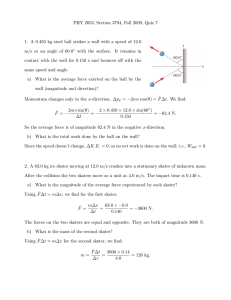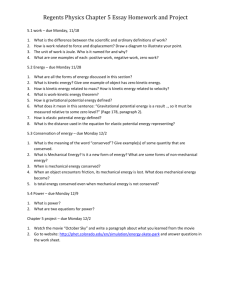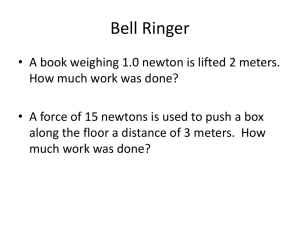You must answer all questions in complete sentences!
advertisement
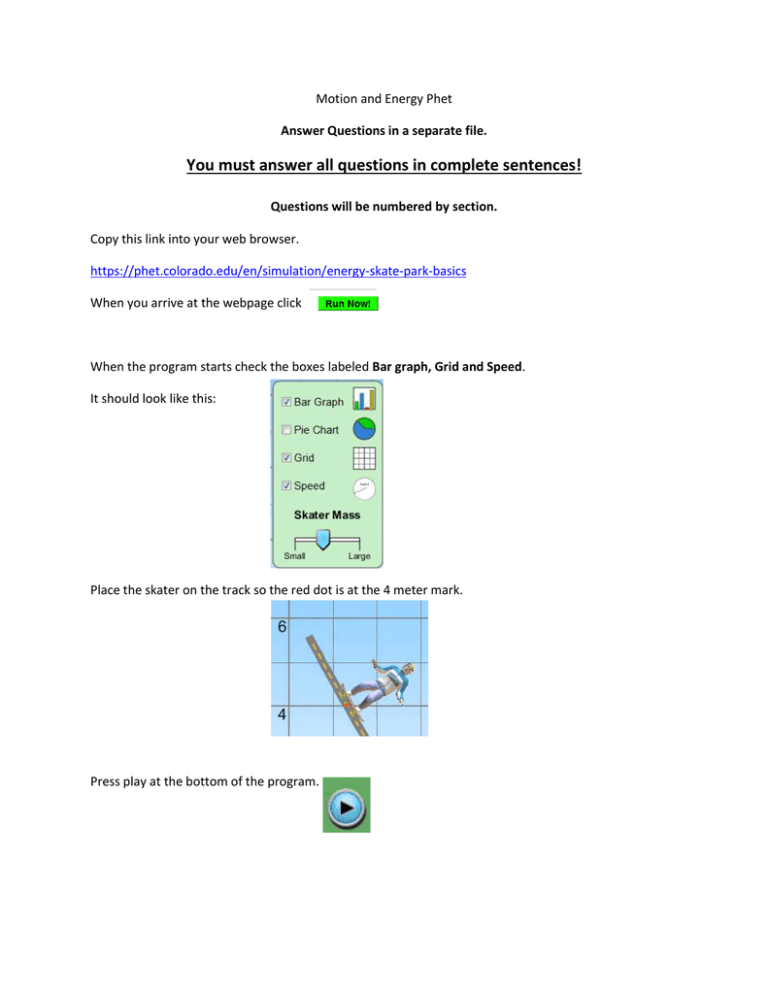
Motion and Energy Phet Answer Questions in a separate file. You must answer all questions in complete sentences! Questions will be numbered by section. Copy this link into your web browser. https://phet.colorado.edu/en/simulation/energy-skate-park-basics When you arrive at the webpage click When the program starts check the boxes labeled Bar graph, Grid and Speed. It should look like this: Place the skater on the track so the red dot is at the 4 meter mark. Press play at the bottom of the program. Potential EnergyThe blue bar in the bar graph represents the potential energy. Observe the change in the bar as the skater moves and answer the following questions. 1) Based on the bar graph, is the potential energy greater at 4 meters or 2 meters? 2) How does the potential energy change as the skater moves down the ramp? 3) Are height and potential energy directly proportional (as height increases potential energy increases) or indirectly proportional (as height increases potential energy decreases)? Now pause the program Use the Skater Mass slide bar to change the skaters mass. Observe the potential energy bar graph as you change the mass and answer the following questions. 4) How does potential energy change as you increase the mass of the skater? 5) Are potential energy and mass directly proportional (as mass increases potential energy increases) or indirectly proportional (as mass increases potential energy decreases)? The equation for potential energy is PE=mgh where m=mass, g=gravity, and h=height. Given the mass of the skater is 10kg. Gravity on earth is . If you place the skater at a height of 4 meters. 6) What is the potential energy of the skater? (Hint the units for PE are Joules or J) Kinetic Energy (get the skater moving again by pressing play) The green bar in the bar graph represents the kinetic energy. Observe the change in the bar as the skater moves and answer the following questions. 1) Where is the skaters speed the greatest? 2) Based on the bar graph where is the kinetic energy the greatest? 3) Are speed and kinetic energy directly proportional (as speed increases kinetic energy increases) or indirectly proportional (as speed increases potential energy decreases)? Pause the program again and adjust the skater mass while observing the bar graph. 4) How does kinetic energy change when mass increases? 5) Are kinetic energy and mass directly proportional (as mass increases kinetic energy increases) or indirectly proportional (as mass increases kinetic energy decreases)? The equation for kinetic energy is . Given the mass of the skater is 10 Kg. The speed of the skater is 5 . 6) What is the kinetic energy of the skater? ( hint the units for kinetic energy are also Joules or J) Total energy The yellow bar in the bar graph represents the total energy. Observe all the bars in the bar graph as the skater moves to answer the following questions. 1) How does the total energy change as the skater moves? 2) As kinetic energy increases what happens to potential energy? 3) How would you describe the relationship between potential energy, kinetic energy and total energy? (at least 2 sentences) Thermal energy and friction (extra credit) If there is time remaining click on the friction tab at the top of the program. Do some of your own experiments in the program and write a short paragraph describing how friction affects the types of energy.
